Project 903: Lun
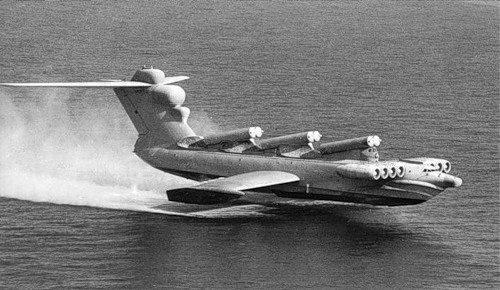
Someday my curiosity will bring me to my grave. In the meantime, it leads to new posts on Habré. The picture shows the unique Lun air-launched rocket-carrying aircraft, which has no analogues anywhere in the world. He is a cross between a ship and an airplane; something similar to a hovercraft, but surpasses them in all characteristics at times. A miracle of engineering, capable of sinking any ship (generally any!) With one volley, is now rotting in a dock on the Caspian Sea.
Story
The development of Lunya began in 1969 at the Central Design Bureau for the SEC (for ships with hydrofoils) named after R.Ye. Alekseeva. CDB is located in Nizhny Novgorod; there it was planned to build a series of several WIGs of this type, and for the large-scale construction of Luney in Feodosia (Crimea) they built a unique production complex, in the assembly workshop of which six Lun-class ekranoplanes under construction could simultaneously be located. The chief designer was V. Kirillov. In 1987, the ground-effect vehicle (WIG) made the first experimental flight on the Caspian Sea. In 1990 transferred to the pilot operation of the Soviet Navy
')
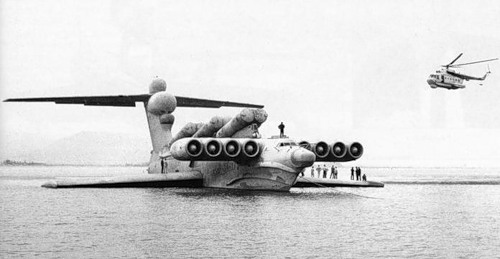
Design
As I said, the Lun was a cross between an airplane and a ship.
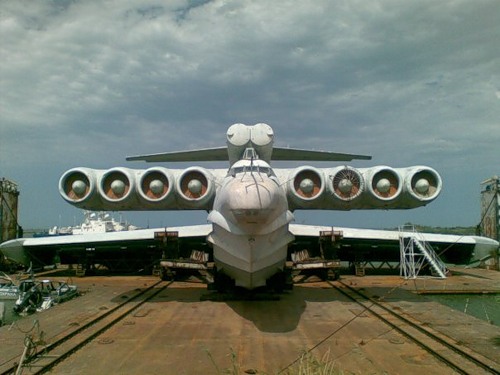
At the time of the creation of the “Lunya” there were only 2 schools of the structure of WIG - Soviet (R.Ye. Alekseev) with a straight wing and western (A. Lippish) with a triangular wing of the backward sweep (back angle, i.e., the letter V is obtained) The Alekseev scheme requires more stabilization work, but allows you to move at high speeds and in airplane mode.
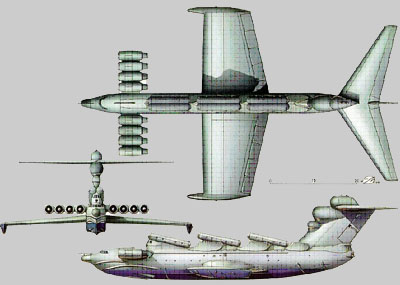
The prototype of the “Lunya” design was the “Caspian Monster” ekranoplan (which sank safely in the 80th). Unlike an airplane, the “Lun” does not have a landing gear, so it cannot climb on its own shore. For permanent dislocation, he needs a dry floating dock.

The crew was 11 people: 7 officers and 4 midshipmen. Autonomy - 5 days
Main characteristics:
Wing Span: 44 m
Length: 73.8 m
Height: 19.2 m
Wing area: 550 m2
Empty screen effect mass: 243 tons
Maximum take-off weight: 380 t
Principle of operation
Movement of the moon is based on the screen effect. In fact, the screen effect is the same airbag, only it is formed not by forcing air with special devices, but by the incoming stream. That is, the “wing” of such devices creates a lifting force not only due to the rarefied pressure above the upper plane of the wing (as in conventional aircraft), but also due to the increased pressure below the lower plane. It can only be created at very low altitudes (10 meters maximum).

After lowering the flap, the engines inject air under the wing, the ekranoplan rises from the water. The center of pressure (the common point of application of force) of the screen effect is closer to the rear edge, the center of pressure of the “normal” lift force is closer to the front edge. Therefore, the greater the contribution of the screen to the overall lift, the more the center of pressure moves backward. This leads to balancing problems. A change in height changes the balance, a change in speed too. The roll causes a diagonal displacement of the center of pressure. Therefore, the management of "Lunem" requires specific skills.
Seaworthiness "Lunya" on the take-off and landing mode was 5-6 points. He could take off at a wavelength of 3 meters and sit down at 3.5.
Engines
So what we can not refuse, so it is in them. The power plant consisted of eight turbojet engines NK-87 with a thrust of 13,300 kgf each. This is unreal much!

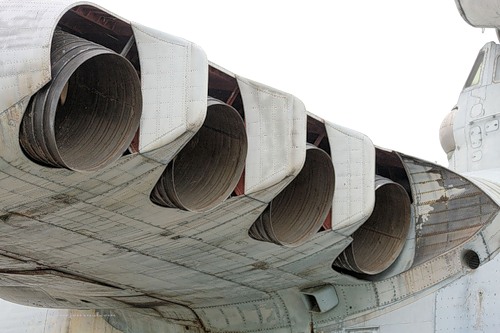
Such engines were used on the IL-86, but for the "Lunya" developed a special marine modification.
Engine Specifications:
Type: 8 x TRD NK-87
Thrust: 8 x 13000 kgf
Maximum speed: approx 500 km / h
Practical range: 2000 km
Flight height on screen: 1-5 m
Armament
Armament - six launch containers with anti-ship missiles (ASM) ZM-80 "Mosquito" OKB A.Ya. Bereznyak.
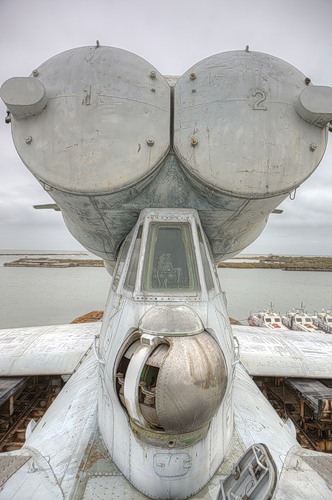

A powerful supersonic rocket with a straight-through sustainer engine with a successful hit was able to put on the bottom of any combat ship of the NATO countries. Since the beginning of the eighties, she began to equip the newest destroyers, and at the same time they equipped the Lun. In principle, his main purpose was "the destruction of enemy aircraft carrier multipurpose or strike groups in collaboration with other naval forces." It is indicative that the US military experts dubbed him “Aircraft Killer”.
Place Arrow:
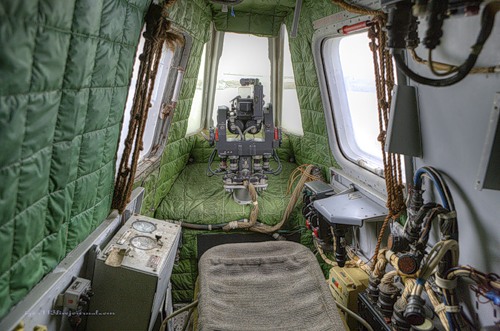
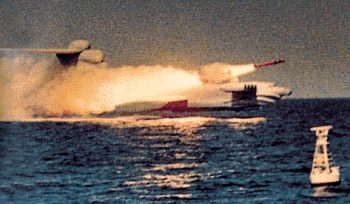
US interest
In operational and tactical terms, "Lun" has just a lot of advantages. It has a higher economy and higher payload compared with aircraft. In terms of speed, combat and load-lifting characteristics, it surpasses hovercraft and hydrofoil vessels. It was unobtrusive for shipborne radar and the most important thing was very tenacious.
After analyzing the prospects of this type of technology and having come to the conclusion that, to put it mildly, there is a significant backlog of work (and in fact the lack of such) in the field of ekranoplanostroeniya, the US Congress created a special commission to develop an action plan to eliminate the “Russian breakthrough.
Of course, nothing would have happened if we did not help them ourselves. Namely - the Soviet Union collapsed. Young Russia and without “Lunya” had enough problems, so members of the commission appealed directly to the Central Clinical Hospital for SEC. The leadership of the latter informed Moscow and received permission from the State Committee on Defense Industry and the Ministry of Defense to hold talks with the Americans under the auspices of the Commission for the Export Control of Armaments, Military Equipment and Technologies of the Ministry of Defense of the Russian Federation. In order not to attract too much attention to the subject of negotiations, a company with a neutral name “Russian-American Science” (RAS) was created, and with her mediation, a delegation of overseas experts had the opportunity to visit the Central Design Bureau for SEC, meet with EKN designers, find out, if possible, details of interest. Then the Russian side kindly agreed to arrange a visit by American researchers to the base in Kaspiysk, where they were able to capture all of their interest on the photo and video tape without any restrictions.

Based on this, it can be considered that things unknown to our possible adversary (at least in the arms race) in this paradoxical technique no longer exist.
Rescuer
With the collapse of the USSR, there was no money to contain "Lun". However, in 1990-1991, with his participation in the Caspian Sea, exercises were held to save people at sea. These teachings have eloquently shown that, in terms of the totality of the tasks to be accomplished and the ease of use of the ship's rescue means, WIGs are excellent maritime rescuers. Indeed, surface ships are not able to quickly arrive in the area of the accident, and aviation is not always able to provide effective assistance, since cannot land in stormy conditions in the area of a ship or vessel in distress. Even modern seaplanes and helicopters have a significantly lower payload, range or seaworthiness compared to ekranoplans, and it’s these qualities that the rescuer needs above all.
If nothing could be done with the 1st Lunema, the second ship of this type, which at that moment was in the assembly shop and was also laid as a missile carrier, could be reconstructed. For the 2nd "Lunya" the project of search and rescue WIG "Rescuer" was developed. The rescuer has a take-off weight of 400 tons, a cruising speed of 360 km / h and a range of 3,000 km. The ekranoplan was supposed to be equipped not only with special rescue equipment, but also to have on board a hospital that could receive 150 victims and assist them. In an emergency, up to 500 people could be taken on board. Unfortunately, the work on this project in the 90s was frozen due to lack of funding at the 95% readiness of the Rescuer.
Epilogue
Where is the "rescuer", I do not know.
"Lun" rots in Dagestan, in a dock on the Caspian Sea
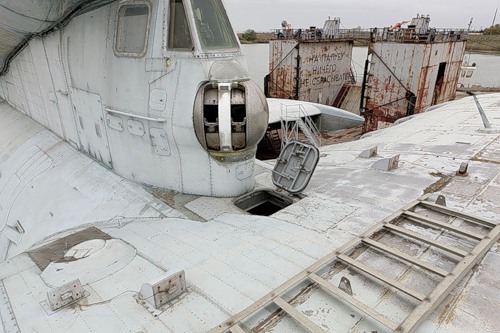
It's a shame to tears.
PS
In different sources, some information varies. He wrote the most common.
More than half of the photos and two paragraphs of the text I stole from LJ-user igor113 . And indeed to write this post pushed me actually he. Thank you very much to him!
UPD On Habré, there was a wonderful post about the prototype "Lunya" - the Caspian Monster airplane
Source: https://habr.com/ru/post/87226/
All Articles